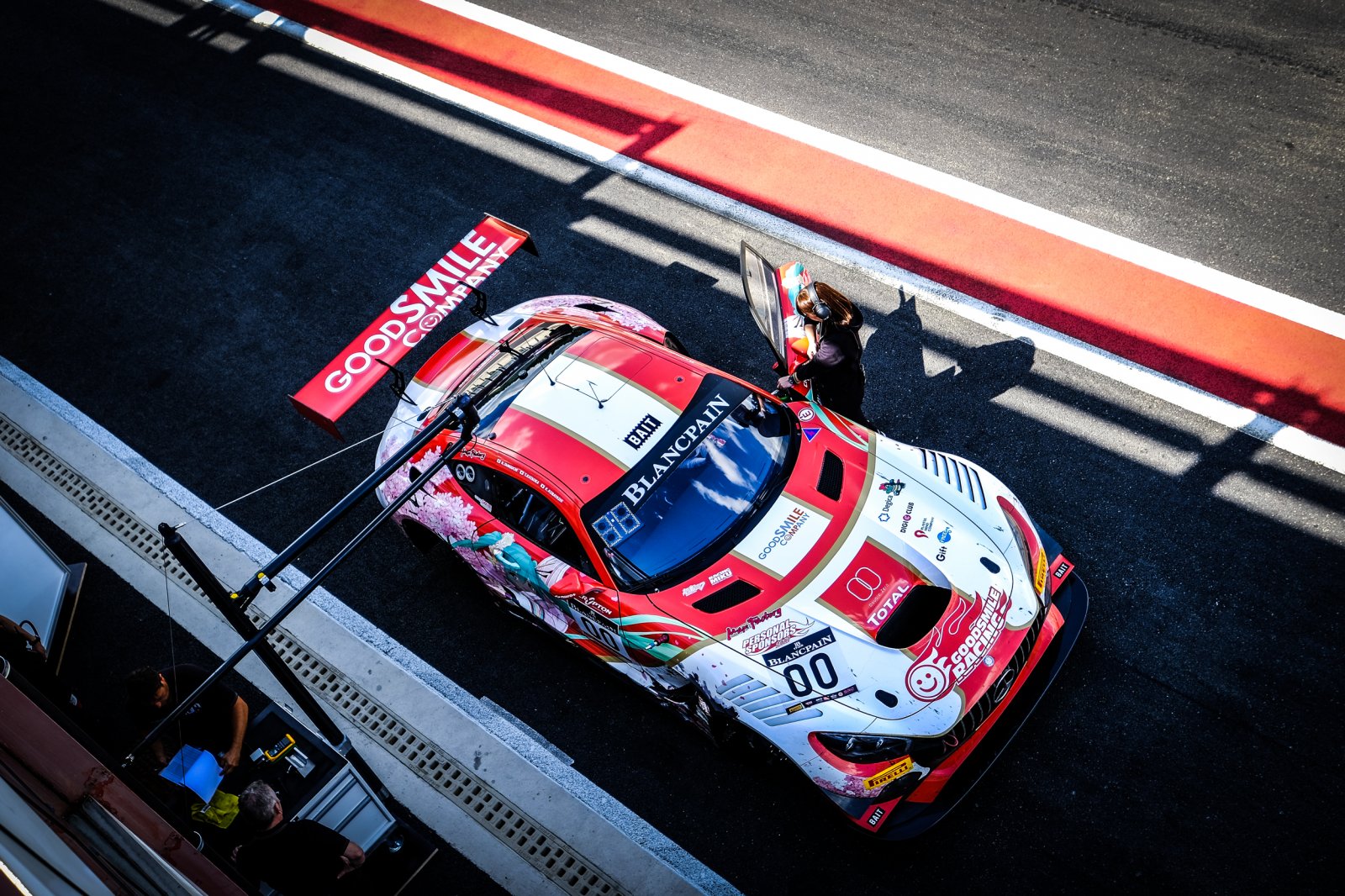The Total 24 Hours of Spa is not quite like all the other rounds of the Blancpain GT Series. These are some of the things to watch out for.
1: Format
Free Practice and Pre-Qualifying are just the same as for all Endurance rounds. Pre-Qualifying means that if, for some reason or other, Qualifying can’t be held, this session can be used to set the grid.
Qualifying is very different from all other Blancpain GT Series rounds. Teams are free to drive as they wish during the two sessions, with refueling allowed, and teams able to work on the cars, including putting them in the garages.
All drivers must set a qualifying time in at least one of the sessions.
All drivers must complete two timed laps during the night qualifying session.
The best time from each car over both sessions is used to determine the top 20 cars, which will qualify for the Superpole.
The Superpole sees the top 20 cars each do two laps, leaving the pit lane at one-minute elements. The teams choose the driver to take part.
The Superpole sets the grid for the top 20 cars, followed by the rest of the cars ordered by their best time from either the qualifying or night qualifying sessions
2:Tyres
For free practice, pre-qualifying and the warm-up, tyres are free and used tyres from previous events may be used
Three sets are marked which must be used in Qualifying and the first two laps of the race.
Superpole competitors must use an additional marked set. This set cannot be used for the start of the race, but can be used during the race
After the first two laps, the number of tyres is free.
3: Track Limits
Always a controversial area ! Cars must remain in contact with the track at all times. This includes the white lines but excludes kerbs etc. As camera pictures can distort, and TV only follows certain cars, Race Control relies on track marshals who are so-called ‘Judges of Fact’ and who report back on any cars which have four wheels outside the track. Race Control concentrates on those areas where an advantage can be gained.
In free practice and pre-qualifying, after warnings, the car will be black-flagged and the driver called to race control. In qualifying, laps where a driver has been reported for track limits and improved his time will be removed. In the race, there are two warnings, then a black-and-white flag, then a final warning before a drive-through penalty is given. These are for the car, not the driver.
Additionally, the race director can instruct a driver to give back time or positions he had gained by going off the track.
4: Full Course Yellow and Safety Cars
Full course yellow brings all the cars down to 80 km/h. A 20-second warning is given. At 10-seconds, boards are shown around the track. At zero, all cars must be at 80 km/h.
Except at the start of the race, a full course yellow period is called before the Safety Car. This allows the safety car to come on track and quickly pick up the leader, before slowing down to group up the cars.
5: Stints and Pit Stops
The strategy is up to the team. It is not mandatory to change tyres and/or driver at each stop.
No stint can be longer than 65 minutes from pit out to pit in. However, if a Full Course Yellow or Safety Car procedure is happening at the point when the driver was due to come in, that is extended to 70 minutes. This is to allow for the fact that the car might have got in on time if it had been able to go at full speed…
All full pit stops – changing tyres and/or a full tank of fuel - have to be longer than a given time. This will be issued by the Stewards.
The cars are allowed to do a short stop, for a puncture, or a splash-and-dash, which has to be under a given time.
Incidentally, if a car comes in for a drive-through or a stop-and-go penalty, this does not reset the stint clock !
6: Bronze and Silver times
Cars in Pro-Am and Am are allowed to have four drivers. This basically means that an additional driver, of any categorisation, can be added to the standard three-driver pairings. The maximums are therefore Platinum-Platinum-Bronze-Bronze (where the Bronze drivers have to share at least eight hours) or Platinum – Silver – Silver – Bronze (where the Bronze driver or drivers have to share six hours). The Bronze hours have to include at least one hour in each six-hour period.
Cars in Am are allowed to add a Silver driver to their usual all-Bronze line-up, but this driver cannot do more than six hours, or more than two in any six-hour period.
7: Maximum driving times
For safety reasons, no driver can do more than three full stints in a row (3 hours 15 minutes) and no driver can do more than 14 hours during the race.
8: Technical Pit Stops
Each car must complete a five-minute pit stop between the start of the 12th hour and the end of the 15th hour. That is, from 03:30 to 07:29. This is to allow for all cars to change brakes and pads, to equalize between those cars that do not have to do this or who have rapid-change systems. What the team does in the five-minute stop does not matter, but they have to make the stop.
9: Lumirank
All the cars from the Total 24 Hours of Spa carry an electronic number on the windscreen.
This number shows by its colour the class in which it is competing, while the number shows its overall position in qualifying, and its position in class during the race. It does not show the car number
The colours are as follows :
PRO: White
PRO-AM: Blue
AM: Orange
NATIONAL: Green

